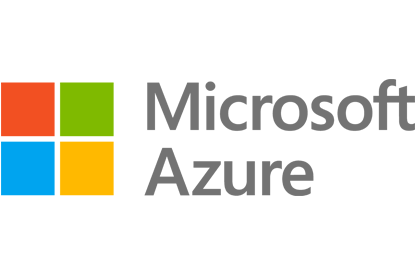Why OpenText
Why OpenText
Overview Why OpenText
OpenText brings decades of expertise to help you unlock data, connect people and processes, and fuel AI with trust
Manage and connect data
Unify data seamlessly across your enterprise to eliminate silos, improve collaboration, and reduce risks
AI-ready information
Get AI-ready and transform your data into structured, accessible, optimized information
Built-in security and compliance
Meet regulatory and compliance requirements and protect your information throughout its lifecycle
Empowering people
Overview Empowering people
OpenText helps people manage content, automate work, use AI, and collaborate to boost productivity
Customers
See how thousands of companies around the world are succeeding with innovative solutions from OpenText
Employees
Our people are our greatest asset; they are the life of the OpenText brand and values
Corporate Responsibility
Learn how we aspire to advance societal goals and accelerate positive change
Partners
Find a highly skilled OpenText partner with the right solution to enable digital transformation
How we compare
Content Management
Service Management
Deploy anywhere
Overview Deployment options
Explore scalable and flexible deployment options for global organizations of any size
Sovereign cloud
Local control. Global scale. Trusted AI
Private cloud
Your cloud, your control
On-premises
Free up resources, optimize performance and rapidly address issues
Public cloud
Run anywhere and scale globally in the public cloud of your choice
AI leadership
Overview Aviator AI
See information in new ways
OpenText™ Aviator AI
AI that understands your business, your data, and your goals
OpenText™ MyAviator
Say hello to faster decisions. Your secure personal AI assistant is ready to get to work
OpenText™ Business Network Aviator
Gain better insights with generative AI for supply chains
OpenText™ Content Aviator
Power work with AI content management and an intelligent AI content assistant
OpenText™ Cybersecurity Aviator
Improve your security posture with AI cybersecurity and agile threat detection
OpenText™ DevOps Aviator
Enable faster app delivery, development, and automated software testing
OpenText™ Experience Aviator
Elevate customer communications and experiences for customer success
OpenText™ Service Management Aviator
Empower users, service agents, and IT staff to find the answers they need
Aviator AI
Overview Aviator AI
See information in new ways
OpenText™ Aviator AI
AI that understands your business, your data, and your goals
OpenText™ MyAviator
Say hello to faster decisions. Your secure personal AI assistant is ready to get to work
OpenText™ Business Network Aviator
Gain better insights with generative AI for supply chains
OpenText™ Content Aviator
Power work with AI content management and an intelligent AI content assistant
OpenText™ Cybersecurity Aviator
Improve your security posture with AI cybersecurity and agile threat detection
OpenText™ DevOps Aviator
Enable faster app delivery, development, and automated software testing
OpenText™ Experience Aviator
Elevate customer communications and experiences for customer success
OpenText™ Service Management Aviator
Empower users, service agents, and IT staff to find the answers they need
Analytics
Overview Analytics
Predict, act, and win with real-time analytics on a smarter data platform
OpenText™ Aviator Search(AI)
Give users access to the answers they need, faster and easier, with multi-repository AI-based search that lets you contextualize everything from clicks to conversations
Business Network
Overview Business Network
Connect once, reach anything with a secure B2B integration platform
Content
Overview Content
Reimagine knowledge with AI-ready content management solutions
OpenText™ Content Aviator(AI)
Supercharge intelligent workspaces with AI to modernize work
Cybersecurity
Overview Cybersecurity
Integrated cybersecurity solutions for enterprise protection
OpenText Cybersecurity for SMBs & MSPs
Purpose built data protection and security solutions
OpenText™ Cybersecurity Aviator(AI)
Reinvent threat hunting to improve security posture with the power of agile AI
DevOps
Overview DevOps
Ship better software—faster—with AI-driven DevOps automation, testing, and quality
Experience
Overview Experience
Reimagine conversations with unforgettable customer experiences
Observability and Service Management
Overview Observability and Service Management
Get the clarity needed to cut the cost and complexity of IT operations
OpenText™ Service Management Aviator(AI)
Redefine Tier 1 business support functions with self-service capabilities from private generative AI
APIs
Overview APIs
Build custom applications using proven OpenText Information Management technology
OpenText™ API Services
Build it your way with OpenText Cloud APIs that create the real-time information flows that enable custom applications and workflows
Device and Data Protection
Overview Device and Data Protection
Protect what matters, recover when it counts
Unified Endpoint Management Tools
- OpenText™ Endpoint Management
- OpenText™ ZENworks Suite
- OpenText™ ZENworks Service Desk
- OpenText™ ZENworks Configuration Management
- OpenText™ ZENworks Endpoint Security Management
- OpenText™ ZENworks Full Disk Encryption
- OpenText™ ZENworks Endpoint Software Patch Management
- OpenText™ ZENworks Asset Management
Solutions
Trusted Data & AI
Overview Trusted Data & AI
Secure information management meets trusted AI
OpenText AI Data Platform
A unified data framework to elevate data and AI trust
OpenText Aviator Studio
A place where you can build, deploy, and iterate on agents in your data's language
OpenText Discovery
A set of tools to help ingest data and automate metadata tagging to fuel AI
OpenText Data Compliance
A suite of services and APIs that make governance proactive and persistent
OpenText Aviator AI Services
Professional services experts who help you on your AI journey
Information Reimagined
Overview Information Reimagined
Get greater visibility and sharper insights from AI-driven information management. Ready to see how?
Knowledge reimagined
Transform daily work with enterprise content management powered by AI
Service Management reimagined
Cut the cost and complexity of IT service management, AIOps, and observability
Connections reimagined
AI-powered B2B integration for supply chain success
Conversations reimagined
Drive value, growth, and loyalty with connected customer experiences
Engineering reimagined
Agile development and software delivery? It only seems impossible
Security reimagined
Cybersecurity for the Enterprise
Decisions reimagined
Unlock insights with AI data analytics
Artificial Intelligence
Overview Aviator AI
See information in new ways
OpenText™ Aviator AI
AI that understands your business, your data, and your goals
OpenText™ MyAviator
Say hello to faster decisions. Your secure personal AI assistant is ready to get to work
OpenText™ Business Network Aviator
Gain better insights with generative AI for supply chains
OpenText™ Content Aviator
Power work with AI content management and an intelligent AI content assistant
OpenText™ Cybersecurity Aviator
Improve your security posture with AI cybersecurity and agile threat detection
OpenText™ DevOps Aviator
Enable faster app delivery, development, and automated software testing
OpenText™ Experience Aviator
Elevate customer communications and experiences for customer success
OpenText™ Service Management Aviator
Empower users, service agents, and IT staff to find the answers they need
Industry
Overview Industry solutions
Improve efficiency, security, and customer satisfaction with OpenText
Energy and resources
Transform energy and resources operations with cloud, cybersecurity, and AI
Financial services
Boost customer experience, compliance, and efficiency with AI
Government
Reimagine your mission with government-secure information management
Healthcare and life sciences
Improve care delivery and patient engagement with AI-powered solutions
Legal
Modernize legal teams with automated, AI-powered legal tech solutions
Manufacturing
Modernize manufacturing operations and logistics to reduce costs and ensure compliance
Retail and consumer goods
Enhance consumer engagement with omnichannel retail solutions and AI
Enterprise Application
Overview Solutions for Enterprise Applications
Run processes faster and with less risk
Services
Services
Overview Services
Achieve digital transformation with guidance from certified experts
Professional Services
Modernize your information management with certified experts
Customer Success Services
Meet business goals with expert guidance, managed services, and more
Support Services
Turn support into your strategic advantage
Managed Services
Free up your internal teams with expert IT service management
Learning Services
Discover training options to help users of all skill levels effectively adopt and use OpenText products
Professional Services
Overview Professional Services
Modernize your information management with certified experts
Customer Success Services
Overview Customer Success Services
Meet business goals with expert guidance, managed services, and more
Support Services
Overview Support Services
Turn support into your strategic advantage
Managed Services
Overview Managed Services
Free up your internal teams with expert IT service management
Learning Services
Overview Learning Services
Discover training options to help users of all skill levels effectively adopt and use OpenText products
Partners
Find a Partner
Overview Find a partner
Information is the heartbeat of every organization. We build information management software so you can build the future
Cloud Partners
Overview Cloud Partners
OpenText partners with leading cloud infrastructure providers to offer the flexibility to run OpenText solutions anywhere
Enterprise Application Partners
Overview Enterprise Application Partners
OpenText partners with top enterprise app providers to unlock unstructured content for better business insights
Partner Solutions
Overview Partner Solutions
Discover flexible and innovative offerings designed to add value to OpenText solutions
Resources for Partners
Overview Resources for Partners
Discover the resources available to support and grow Partner capabilities
Support
Overview Customer Support
Get expert product and service support to accelerate issue resolution and keep business flows running efficiently
Resources
Overview Resources
Explore detailed services and consulting presentations, briefs, documentation and other resources
Choose your region:
Europe, Middle East and Africa
Asia–Pacific
 Vodafone Intelligent Solutions (VOIS)
Vodafone Intelligent Solutions (VOIS)
Leveraging Operations Bridge and AIOps to deliver new services fast and create enhanced observability

About Vodafone Intelligent Solutions (VOIS)

-
Employees:31,000+
-
Global locations:8
-
Value delivered:€1 billion+
Summary
Challenges
- Assigning priority and managing three million IT events every month.
- Fragmented IT operating model with siloed data.
- Difficulty predicting incidents' business impact due to lac of visibility.
Solution
- Leveraged AIOps to provide automation and remove duplication.
- Fixed problems faster with generative AI support.
- Created real-time insights with a data lake.
Results
Deployed application fixes in minutes
Reduced mean time to repair P1 issues by 20%
Improved collaboration and enhanced observability
Challenges
- Assigning priority and managing three million IT events every month
- Fragmented IT operating model with siloed data management
- Difficulty in predicting business impact of an incident through lack of end-to-end visibility
To maintain its leadership position, Vodafone needs to deliver new services to market fast and have full control over its operating costs. With a massive global IT infrastructure, the operating model was fragmented. Local Vodafone markets used different technologies to manage their IT operations, and application teams leveraged different data sets which resulted in different views, even if the same application was deployed in different markets. Overall, teams acted in a siloed manner, with processes requiring too many hand-offs.
Vodafone Intelligent Solutions’ Architect Lead, Mohammed Shata, recalled a time where different tools and consoles were used for system monitoring, “Alarms would go off to indicate an outage, and the team would try to understand whether it was the firewall, a database, or a key application while running between different consoles. It was impossible to predict the potential business impact of an incident as there was no end-to-end visibility into any of our systems.”
This fragmented monitoring model meant that IT could not support the business as effectively as it wanted to. “There was no transparency into how IT provides services, and hence the business had no insight into what value IT provided,” said Shata. “Every month Vodafone systems generate three million events globally which creates a lot of noise. We wanted to introduce a single consolidated layer for IT operations management so that all events occurring in our environment are centrally managed. This required a unified and standardized operating model where all procedures are clear.”

[OpenText™] Operations Bridge is an open solution that allows us to integrate all relevant data sources for end-to-end AIOps observability. This helped to reduce our number of IT incidents and identify and fix critical issues earlier.
Solution
Operations Bridge delivers clear IT observability. This removes the noise from three million monthly events and focuses efforts on root cause analysis. Leveraging generative AI is expected to solve 50 percent of regularly encountered correlation issues.
Products deployed
-
OpenText™ Operations Bridge
Centralized IT event management solution for streamlined operations, real-time insights, and end-to-end observability
Leveraging AIOps provides automation and removes duplicate events
Vodafone’s aim was to create clear IT observability and the team understood how moving towards an AIOps model could support this. Observability is different from traditional monitoring as it not only gathers data but also analyzes that data to provide actionable insights. Those extra steps provide a more comprehensive understanding of system and application behavior and help to identify issues that would otherwise be difficult to detect. Operations Bridge automates discovery, monitoring, and remediation, while fast-tracking a move to full-stack AIOps. It is designed to distinguish the signal from the noise, and focuses IT operations on root cause, rather than fighting symptoms.
With Operations Bridge as the global IT events management solution, domain managers across four continents could work from the same simplified data view at a global level. Shata commented, “Our monitoring takes place on a three-tier architecture where a central Operations Bridge console manages events received from different domains. By leveraging AIOps, we have automated flows for issue resolutions and tickets are triggered automatically when required. We not only detect incidents but correlate the data that drives them by integrating Operations Bridge with more than 15 different third-party tools. This way we remove duplicate events, and auto-close related events by matching event patterns. We consolidate everything into a unified perspective and move quickly through diagnosis and repair. Following the Operations Bridge implementation we noticed a welcome 70 percent alarm reduction, but we knew we could achieve much more.”
Automating correlation with generative AI leads to faster problem fixes
Moving from traditional monitoring to AIOps required a data-centric approach with an event-driven platform. The team wanted to introduce AI to enhance its operations team. By collecting and enriching data from a wide range of sources using Operations Bridge data connectors, many incidents were resolved through automation. OpenText™ SiteScope™, an Operations Bridge component, was leveraged for agentless and remote application monitoring. By proactively monitoring mission-critical applications, the team can now identify and rectify problems before they cause user issues.
Generative AI leads the way to even more innovation, as Shata commented, “We use generative AI to generate new workflows based on our experience of previous incidents. By enriching our alarms and incidents with more context, generative AI can help pass more information to the operations teams so that they can fix the problem faster. For us, Operations Bridge is all about correlation and identifying root cause. We recently moved from manual correlation, the quality of which would be dependent on the level of expertise of the assigned agent, to automated correlation leveraging a machine learning model based on previous events, minimizing human interaction. We anticipate that this will solve at least 50 percent of the correlation issues we regularly encountered.
Creating real-time insights with OpenText™ OPTIC Data Lake
The team applied AI-driven analytics to the monitoring capability. Building on top of the monitoring data and using data log sources, Vodafone created analytics forecasts and baselines. Business Value Dashboards (BVDs) gave real-time insights into IT and business status, and a bi-directional integration between Operations Bridge and Splunk was used for log management and operation analytics.
All data sources leveraged for event correlation are captured in the OPTIC Data Lake, a containerized common repository for data collection and storage enabling real-time streaming data ingestion and processing. OPTIC reporting consolidates highly scalable, real-time performance collection, analysis, and graphing for hundreds of metrics and consumes data from the OPTIC Data Lake. This supports Vodafone’s need to have a clear understanding of how its own IT Key Performance Indicators (KPIs) impact business revenue.

By leveraging AIOps, we have automated flows for issue resolutions and tickets are triggered automatically when required. We not only detect incidents but correlate the data that drives them by integrating Operations Bridge with more than 15 different third-party tools.
Results
Monitoring as Code introduced a shift left so issues are identified and fixed early. By reducing noise and consolidating a variety of data sources for correlation, Operations Bridge simplifies complexity and leverages OPTIC for end-to-end observability.
Improved delivery of application fixes from days to minutes
Introducing Monitoring as Code (MaC) represented a real shift left in application development from a business perspective. MaC includes collection, diagnosis, alerting, processing, and remediation (self-healing), all defined as code. It provides the opportunity to investigate root cause at the point of failure. Instead of manually creating code packages, generative AI can create these automatically, leveraging the latest industry standards. With monitoring deployed alongside the application development via a single, unified pipeline, any issues are identified and fixed early with dynamically configured events delivered to Operations Bridge via API. This reduces Vodafone’s delivery of application fixes from a few days to mere minutes. The expectation is that self-healing capabilities will increase by 30 percent with the introduction of MaC.
Reduced mean time to repair P1 issues by 20%
Deploying Operations Bridge significantly reduced the noise level with AI-driven event correlation in a consolidated environment. Shata said, “Our goal is to reduce priority 1 (P1) issues and the manual labor involved in solving them. By providing a generic data collection approach, Operations Bridge massively simplifies the complexity. Our OPTIC Data Lake is in full operation, applying advanced operational analytics and machine learning algorithms to enhance our operations even further. Having end-to-end observability already reduced our mean time to repair P1 issues by close to 20 percent. Our aim over the next couple of years is to reduce our issue detection time by 50 percent which will positively impact our customer satisfaction.”
Improved team collaboration and enhanced end-to-end visibility
Automatic incident creation and enhanced self-service actions are designed to reduce manual labor for service agents and to free up time to work on application development and service enhancements. Root cause analysis, which could take hours, is now managed automatically in minutes.
Shata concluded, “In collaboration with OpenText we created a single, consolidated layer for IT operations which forms the basis of our application development and management. Operations Bridge is an open solution that allows us to integrate all relevant data sources for end-to-end AIOps observability. This helped to reduce our number of IT incidents and identify and fix critical issues earlier, while the Operations Bridge central event management console gave us a simplified central global view. This improved team collaboration and created visibility in the end-to-end application lifecycle.”
Share your story






